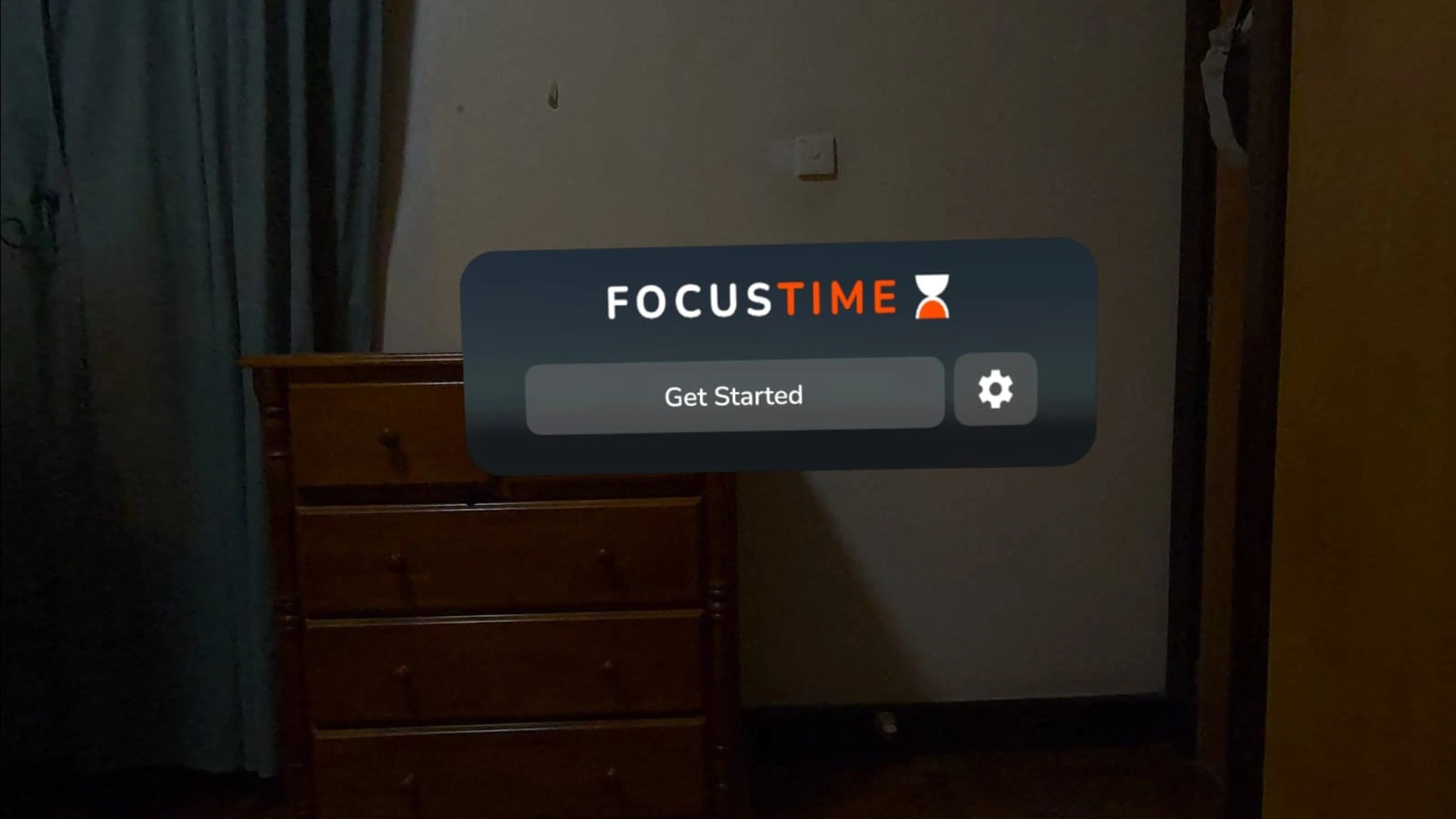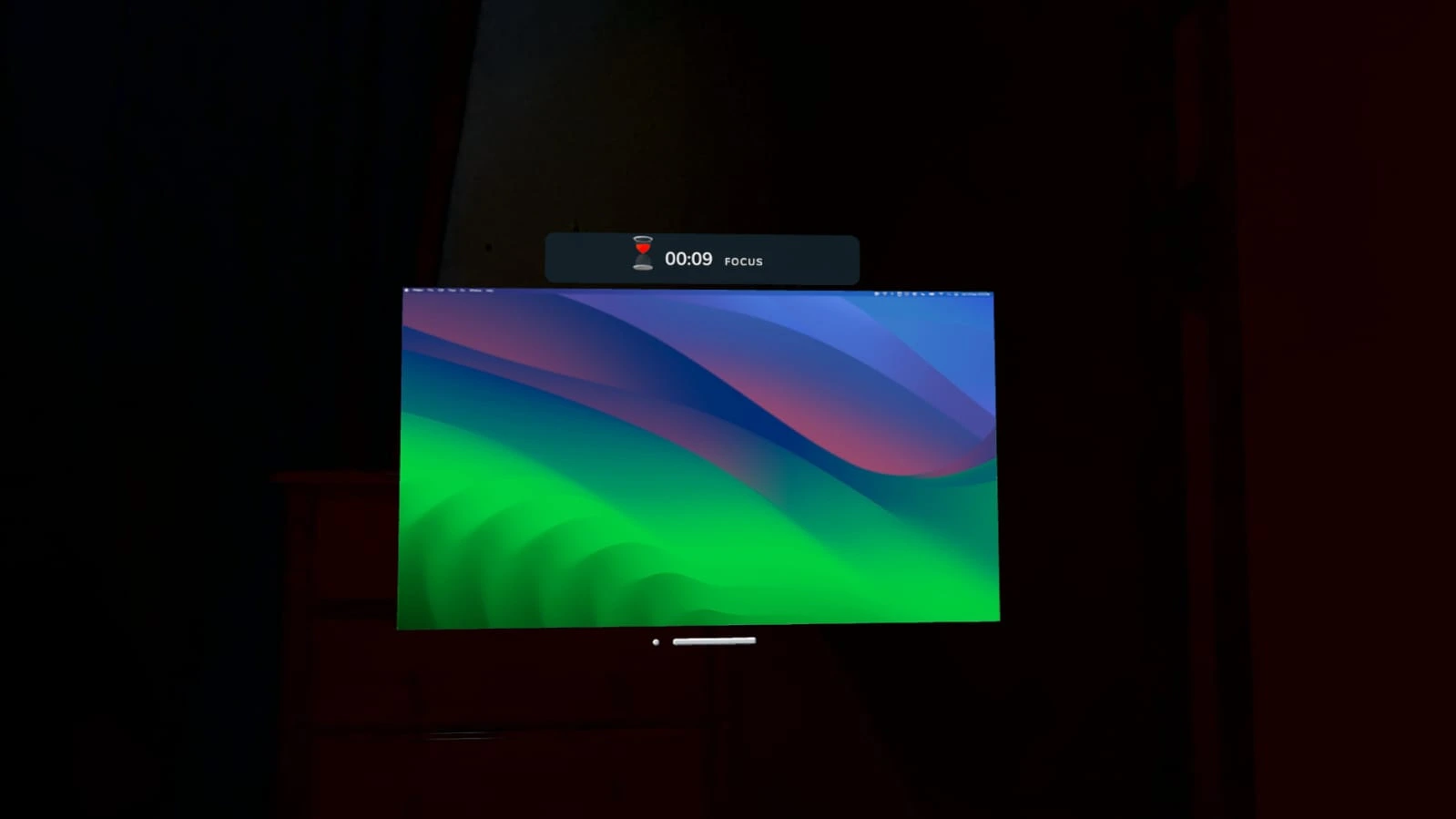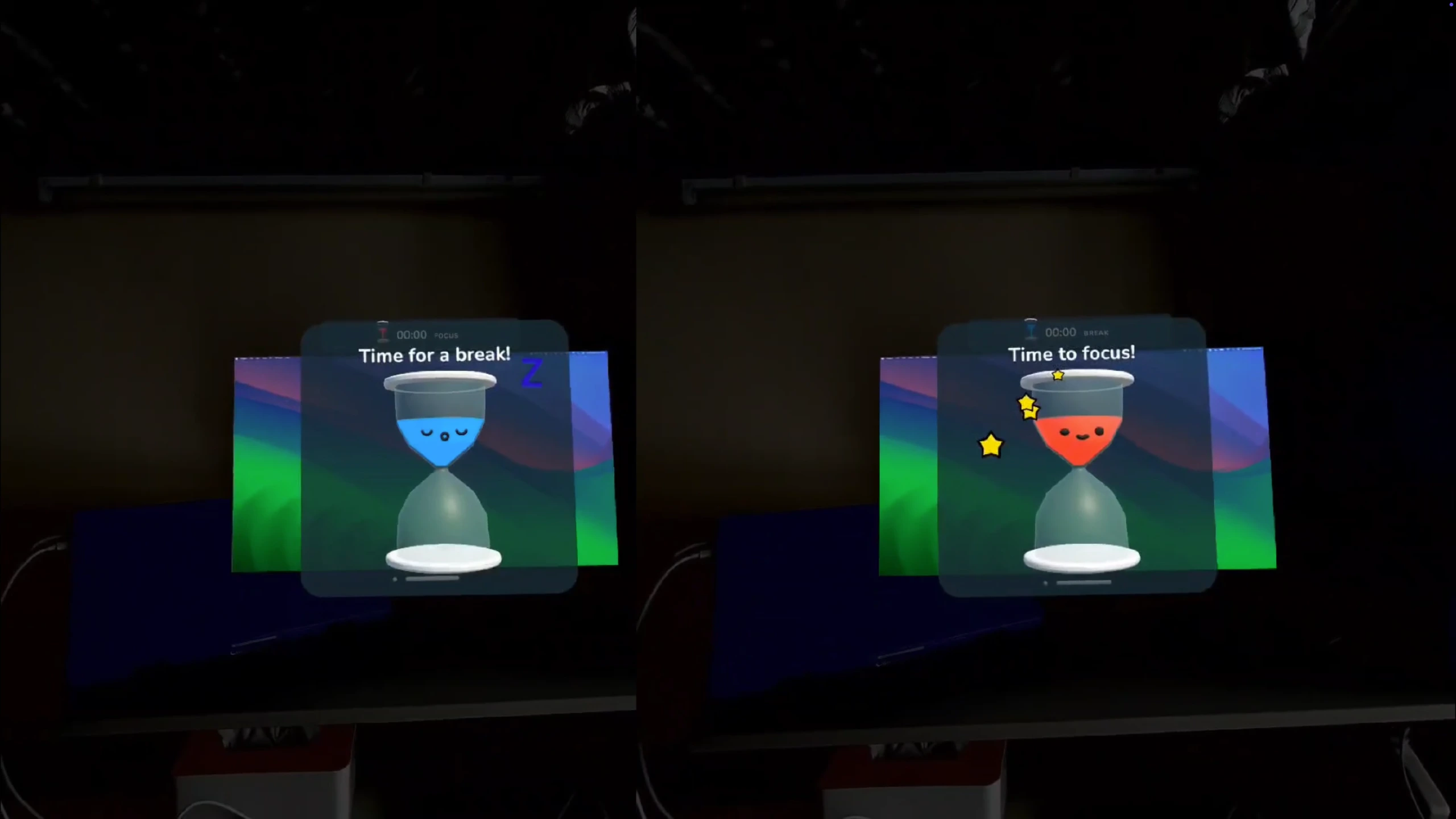FocusTime
An XR Pomodoro Timer to Encourage Mindful Focus
Role
Solo Designer and Developer
Duration
1 month for XR Design Competition
Responsibilities
- Carried out end-to-end design process
- Developed and iterated on the Unity prototype
The Brief
The design competition theme was diegetic design: crafting interfaces that exist naturally within the user's environment, without relying on traditional HUDs or menus.
I wanted to explore how XR could create a more mindful approach to time management, building on a method I often use myself—the Pomodoro technique.
Project Highlights
Runner-up in the XR Design Competition
To build the fully interactive Unity prototype
To hone our XR design sensibilities halfway through the competition
Video showcased to judges and community
Ideation
The Pomodoro technique—working in focused sprints followed by short breaks—felt like a perfect match for diegetic design.
Instead of an abstract timer, I imagined a physical hourglass that users could interact with naturally to track time.
Initially, I considered using a tomato kitchen timer, a classic symbol of the Pomodoro technique. However, implementing the twisting motion accurately in Unity proved challenging. By process of elimination, I opted for an hourglass to symbolize the passage of time.
The initial prototype included:
- Flipping the hourglass to start the timer
- Dimming lights and playing soothing music to help users focus
- Flipping back to pause the session
Key Iterations
Early Design Critique
- Received feedback during a formal critique session.
- Feedback highlighted that the hourglass attracted too much attention, users had to turn their heads to view the time, and the flipping motion was not ergonomic, requiring a full 180-degree rotation.
- Identified the importance of an always-visible pinned hourglass and timer to keep users grounded.
Rotation States and Design Improvements
- Divided the 180-degree rotation into three buckets:
- 0 to 60 degrees: Reset the timer
- 60 to 120 degrees: Pause the timer
- 120 to 180 degrees: Start the timer
- Added labels to indicate the current action based on the rotation angle.
- Minimized and docked the hourglass at the top to show time upfront.
- Introduced a "distance grab" interaction, allowing users to grab and flip the hourglass without physically moving.
- Focused on ensuring the object behavior felt predictable and satisfying.
Animations and Quality of Life Features
Post competition, I made several refinements:
- Learned basic 3D modeling and animations using Blender to add focus and break time animations
- Based on feedback, redesigned the rotation indicator into a speedometer-style UI to make state changes (pause, reset, continue) more intuitive.
- Fixed small bugs and added polish—like system recentering, hover states, and tweened animations—that'll be useful in future XR projects.
Final Solution
FocusTime is an XR Pomodoro timer where:
- Flipping the hourglass starts a Pomodoro session.
- A pinned visual timer shows progress without breaking immersion.
- Natural gestures and interactions are central—no floating menus or UI panels.



Outcomes
- Runner-up for the XR Design Competition.
- Built an interactive prototype that demonstrated a mindful, diegetic time management experience.
Future Ideas
Setting the Time
Currently, the prototype defaults to a 25-minute session. Future iterations could allow users to choose between different session lengths by selecting between small (25 minutes) and large (45 minutes) hourglasses. Alternatively, replacing the hourglass with a dial could enable users to set custom durations.
Music Controls and Customization
Introducing controls to mute/unmute music and allowing users to customize the background music could enhance the user experience. These settings would be accessible through a dedicated settings menu.
Augments
With the announcement of Augments by Meta in 2023, FocusTime could evolve into a persistent digital object placed in the user's environment. Users could position the hourglass on their desk and interact with it naturally, flipping to start or reset sessions.
Retrospective & Learnings
1. Focus More on Ergonomics Early
Initially, I naively prototyped the hourglass flipping in Unity without considering real-world ergonomics. In hindsight, grabbing and physically testing the flipping motion earlier would have revealed that a dial or twist mechanism might feel more natural.
2. Unity and Closing the Skill Gap
This project helped me practice bringing my XR ideas to life using Unity, Bezi, and ShapesXR.
Although Unity has a steep learning curve, leveraging AI tools like ChatGPT and Perplexity at the time helped me generate and debug code. Logical thinking and debugging skills were crucial when AI-generated code didn't work perfectly.
3. Finding an Ideal Workflow
Through this project, I discovered a rough ideal workflow for myself:
- Sketch ideas on paper
- Create UI panels in Figma
- Prototype spatial layouts in Bezi or ShapesXR
- Import assets into Unity for interaction implementation
A small but valuable learning: Bezi imports assets as prefabs into Unity, preserving previous work during updates, while ShapesXR overwrites assets—a discovery I learned the hard way!